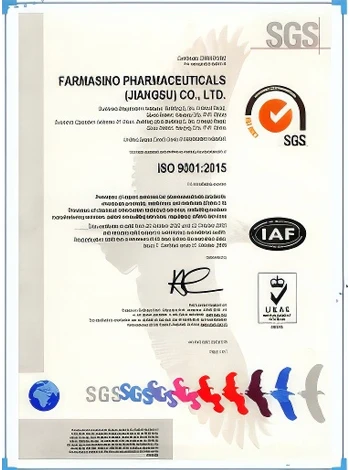



Chlorine Dioxide Sales - Effective and Safe Disinfection Solutions
The Rise of Chlorine Dioxide Sales A Growing Market and Its Applications
Chlorine dioxide (ClO2) has gained significant attention in recent years for its diverse applications and effectiveness as a disinfectant. As public awareness of disinfectants and sanitization practices has surged—especially in light of global health crises—the sale of chlorine dioxide has also seen a marked increase. This article will explore the reasons behind this trend, the various uses of chlorine dioxide, and the regulatory considerations surrounding its sale.
Applications of Chlorine Dioxide
Chlorine dioxide is primarily known for its potent antimicrobial properties. It is widely used in water treatment facilities to eliminate bacteria, viruses, and biofilms, ensuring that drinking water is safe for consumption. Its ability to break down organic contaminants makes it a preferred choice for municipalities and industrial applications alike. Moreover, chlorine dioxide is effective in treating wastewater, helping to meet environmental standards and improve ecosystem health.
In addition to water treatment, chlorine dioxide is employed in various other sectors, including food processing and healthcare. In food safety, it reduces the microbial load on surfaces and food products, contributing to overall hygiene. In healthcare settings, it is used for disinfecting surgical instruments and surfaces, ensuring compliance with stringent sanitation standards. The effectiveness of chlorine dioxide in these applications has fueled its demand in commercial markets, leading to a rise in sales.
The Market Growth
The global market for chlorine dioxide is expanding as industries recognize the importance of hygiene and safety. The COVID-19 pandemic has intensified this awareness, with businesses and consumers alike seeking effective disinfectants to mitigate the risk of viral transmission. Reports indicate that the chlorination market is projected to grow significantly, driven by the rising demand for safe water, improvements in food processing methods, and increasing awareness of sanitation in public spaces.
chlorine dioxide sale

The sale of chlorine dioxide is also bolstered by its non-corrosive nature, making it a safer alternative to traditional chlorine in many applications. This quality appeals to various sectors, including hospitality, where maintaining a clean environment is crucial for customer satisfaction.
Regulatory Considerations
Despite its advantages, the sale and use of chlorine dioxide are subject to regulatory scrutiny. In many countries, the production and application of chlorine dioxide are regulated to ensure safety for consumers and the environment. For instance, the U.S. Environmental Protection Agency (EPA) monitors the use of chlorine dioxide in water treatment and mandates compliance with safety standards. This means that manufacturers and suppliers must adhere to rigorous protocols, which can influence market dynamics.
Moreover, there has been ongoing debate regarding the use of chlorine dioxide as a treatment for diseases, particularly COVID-19. Some claims regarding its efficacy have not been substantiated by scientific evidence, leading to warnings from health organizations. Businesses involved in the sale of chlorine dioxide must navigate these regulations carefully to avoid potential legal challenges while providing legitimate, effective products.
Conclusion
In conclusion, the rise in chlorine dioxide sales reflects a growing recognition of its vital role in sanitation and safety across multiple industries. As demand for effective disinfectants continues to rise, driven by both consumer awareness and regulatory requirements, chlorine dioxide is well-positioned to meet these needs. However, stakeholders in this market must remain aware of regulatory frameworks to ensure safe and responsible use, paving the way for a sustainable and thriving future in the chemical sales sector.
-
Sodium Chlorite Hot UsesNewsJul.01,2025
-
Sodium Chlorate ApplicationsNewsJul.01,2025
-
Smart Use Of Sodium ChloriteNewsJul.01,2025
-
Power Of Sodium BisulfateNewsJul.01,2025
-
Potassium Monopersulphate & Sodium Chlorite: Key to Effective Cleaning SolutionsNewsJul.01,2025
-
Pool Water Treatment GuideNewsJul.01,2025
-
Why Strontium Carbonate Still MattersNewsJun.06,2025










